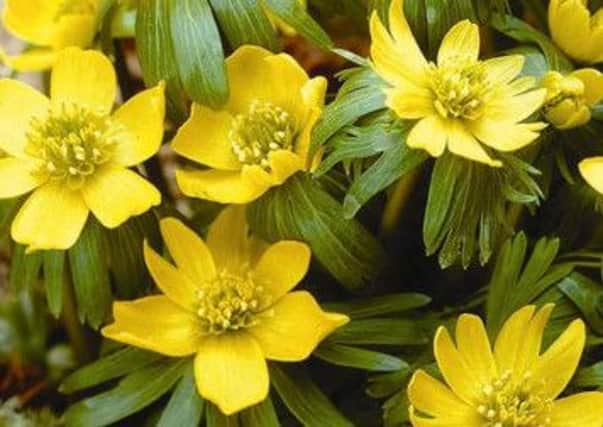A joy of early spring


They look like ground-hugging buttercups (they are related to that most annoying of weeds and the Ranunculaceae family) and are most at home in deciduous woodland where they make the most of their opportunity to grow, flower and seed before spring brings a canopy of leaves to cut down the amount of light reaching the ground. Then they die back for another year.
Winter aconites are small and rarely manage to grow taller than just a few inches, which is why they are best grown in numbers, somewhere where the terrain makes the most of any early sunshine and where neighbouring plants don’t steal their thunder. They are golden to attract pollinating insect at a time of year when little buzzers are few and far between.
Advertisement
Hide AdAdvertisement
Hide AdEranthis hyemalis spread by seed, and can soon form decent-sized carpets of plants, particularly if they are left undisturbed and they are allowed to see freely. But their below-ground tubers hate drying out. Like snowdrops, they are best planted or transplanted ‘in the green’, when the foliage is still fresh. Dried tubers tend to take a lot longer to establish themselves.
Plant aconites them in any reasonably fertile soil – if possible, in full sun or beneath deciduous trees or shrubs where they can make the most of the light. They definitely do not like a wet soil, so make sure there is good drainage.
Some gardeners dislike aconites for the messy mass of foliage that remains for several weeks after the flowers have faded. If they are to flower the next year, however, this ruff of strappy leaves should be left untouched until April or May, when it dies down naturally. Like many spring-flowering bulbs, the decaying leaves help give the underground tuber a much-needed feed to help prepare it for next spring.
Don’t confuse these tiny golden aconites with Aconitum napellus, also known as wolfsbane or monkshood; the latter is extremely toxic. Eranthis hyemalis has been known to cause problems when eaten by animals, but it is considered only mildly toxic – like the vast majority of plants growing in Britain’s gardens.